Chapter: Pathology: Cellular Injury and Adaptation
Cellular Changes During Injury
CELLULAR CHANGES DURING INJURY
Cellular
responses to injury include adaptation (hypertrophy or
atrophy, hyperplasiaor metaplasia), reversible injury, and irreversible injury
and cell death (necrosis, apoptosis, or necroptosis).
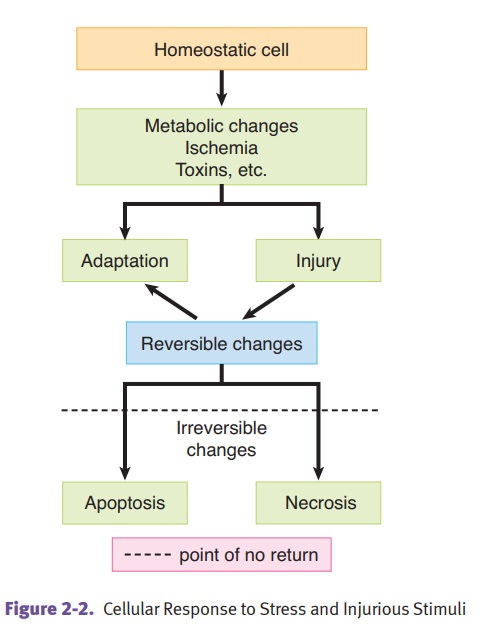
The
cellular response to injury depends on
several important factors, including the type of injury, duration
(including pattern) of injury, severity and intensity of injury, type of cell
injured, the cell’s metabolic state, and the cell’s ability to adapt.
The
critical intracellular targets that are
susceptible to injury are DNA, produc-tion of ATP via aerobic respiration,
cell membranes, and protein synthesis.
Important mechanisms of cell injury are
as follows:
·
Damage to DNA, proteins, lipid membranes, and circulating
lipids (LDL) can be caused by oxygen-derived free radicals, including
superoxide anion (O2• –), hydroxyl radical (OH•),
and hydrogen peroxide (H2O2).
·
ATP depletion: Several key biochemical pathways are
dependent on ATP. Disruption of Na+/K+ or Ca++
pumps cause imbalances in solute concentra-tions. Additionally, ATP depletion
increases anaerobic glycolysis that leads to a decrease in cellular pH. Chronic
ATP depletion causes morphological and functional changes to the ER and
ribosomes.
·
Increased cell membrane permeability: Several defects can
lead to movement of fluids into the cell, including formation of the membrane
attack complex via complement, breakdown of Na+/K+ gradients (i.e., causing
sodium to enter or potassium to leave the cell), etc.
·
Influx of calcium can cause problems because calcium is a
second messenger, which can activate a wide spectrum of enzymes. These enzymes
include pro-teases (protein breakdown), ATPases (contributes to ATP depletion),
phospho-lipases (cell membrane injury), and endonucleases (DNA damage).
·
Mitochondrial dysfunction causes decreased oxidative
phosphorylation and ATP production, formation of mitochondrial permeability
transition (MPT) channels, and release of cytochrome c (a trigger for
apoptosis).
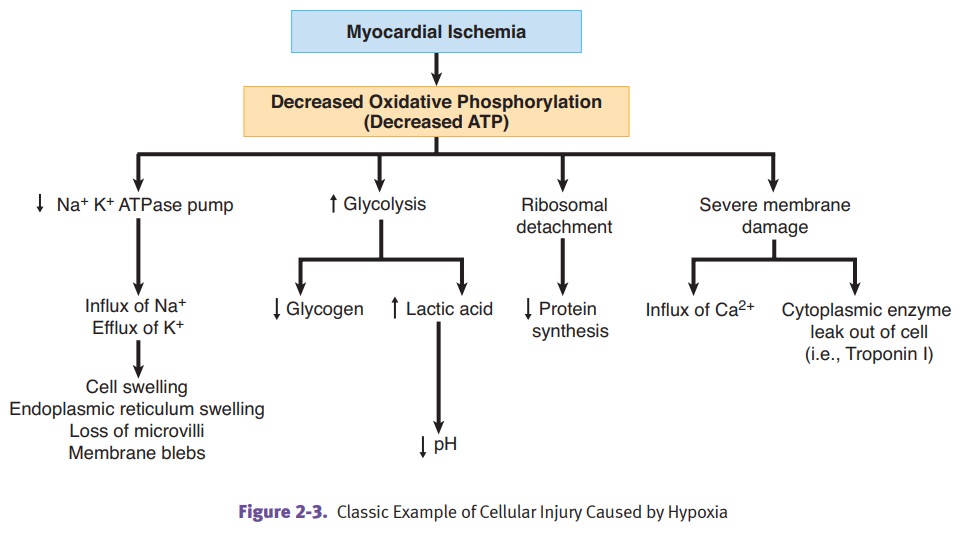
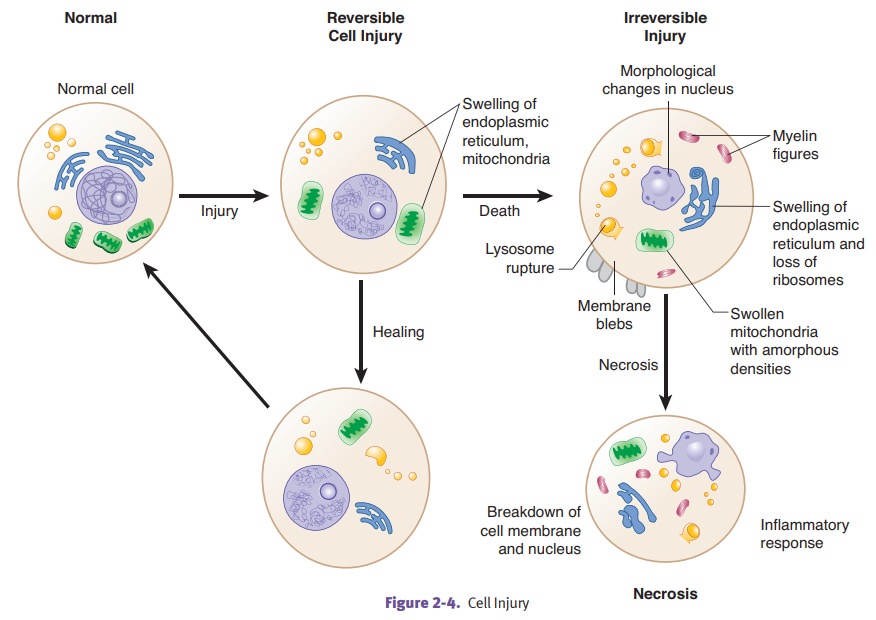
Reversible cell injury:
·
Decreased synthesis of ATP by
oxidative phosphorylation.
·
Decreased function of Na+K+ ATPase membrane pumps,
which in
turn causesinflux of Na+ and water, efflux of K+,
cellular swelling (hydropic swelling), and swelling of the endoplasmic
reticulum.
·
The switch to anaerobic glycolysis
results in depletion of cytoplasmic glyco-gen, increased lactic acid
production, and decreased intracellular pH.
·
Decreased protein synthesis leads to
detachment of ribosomes from the roughendoplasmic reticulum.
·
Plasma-membrane blebs and myelin figures may
be seen.
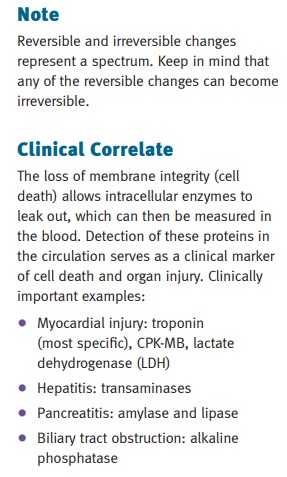
Irreversible cell injury:
·
Severe membrane damage plays a
critical role in irreversible injury, allowsa massive influx of calcium into
the cell, and allows efflux of intracellular enzymes and proteins into the
circulation.
·
Marked mitochondrial dysfunction produces
mitochondrial swelling, largedensities seen within the mitochondrial matrix,
irreparable damage of the oxidative phosphorylation pathway, and an inability
to produce ATP.
·
Rupture of the lysosomes causes
release of lysosomal digestive enzymes intothe cytosol and activation of acid
hydrolases followed by autolysis.
·
Nuclear changes can
include pyknosis (degeneration and condensation ofnuclear chromatin),
karyorrhexis (nuclear fragmentation), and karyolysis (dissolution of the
nucleus).
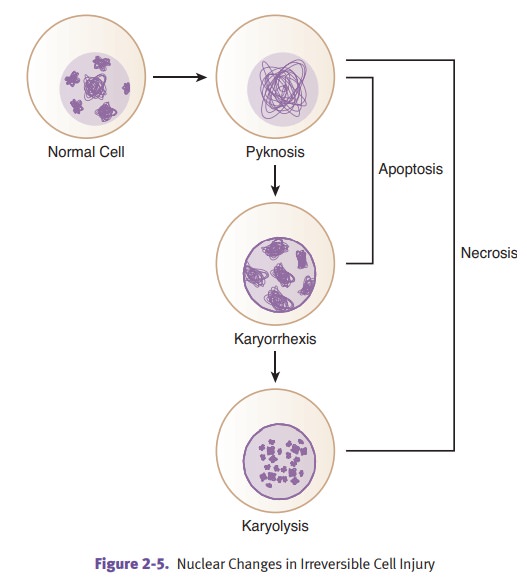
Related Topics